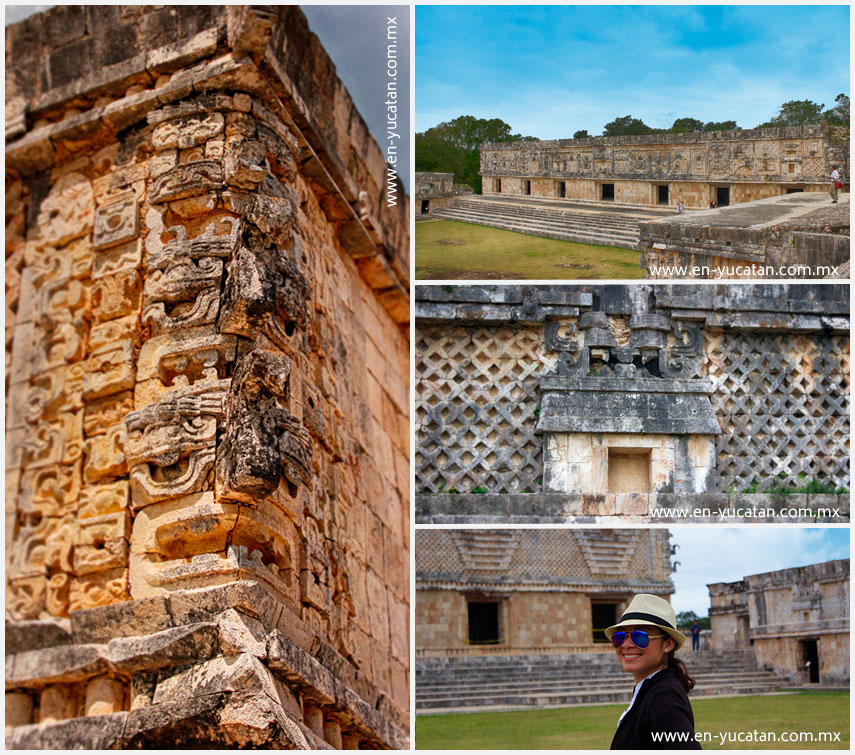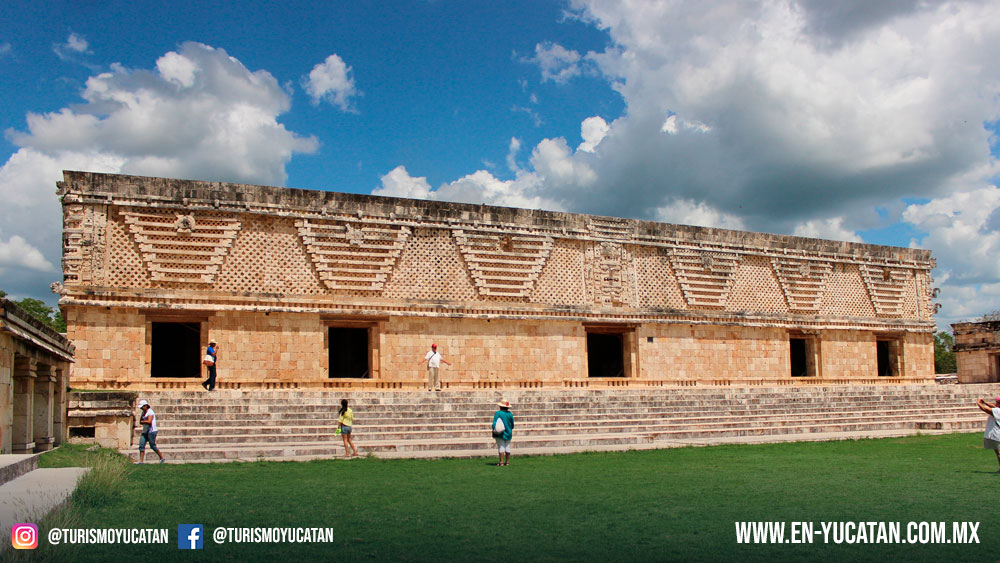The name of this group was assigned by Diego López de Cogolludo in the 16th century. The complex is made up of four palaces placed on different levels, which surround a courtyard. Its construction dates from 900-1000 AD.
The facades present a rich combination of decorative motifs such as lattices, small columns, huts, a mask of the rain god, double-headed snakes, owls, symbols of the planet Venus, geometric elements and naked and tied human figures, either standing or sitting. Representations of Tláloc, the rain god of central Mexico, stand out.
This architectural complex is made up of four structures that stand on different platforms arranged around a large patio. Each façade presents a combination of designs whose discourse is related to different deities evoking cosmogonic concepts and a strong fertility cult. The building located to the north seems to be the most important since it is on a higher platform with respect to the others, although those located to the east and west are no less important.

Access to the quadrangle is through a large vault located in the south building. The façade of the west building is decorated by mosaics with feathered serpent motifs that frame geometric symbols, warriors and chaac masks. The east building presents trapezoidal arrangements such as bars of double-headed snakes and shields with the representation of owls. There are also decorative elements that simulate houses with palm roofs and waterfalls of masks with long noses.
Of the different buildings that make up this palace complex, several vaulted lids have been recovered, they are painted and represent partial calendar dates between 906 and 907 AD, which is consistent with the period of the Chan Chahk'ahk nalajaw government.
The formal entrance, the hierarchy of the structures through the different elevations on which they stand and the absence of domestic elements suggest that this space corresponds to a royal palace with administrative and non-residential functions, where the ruling-sovereign group, court royal court and government council - they had to have meetings to receive tribute, make decisions and issue sentences, among other activities.
